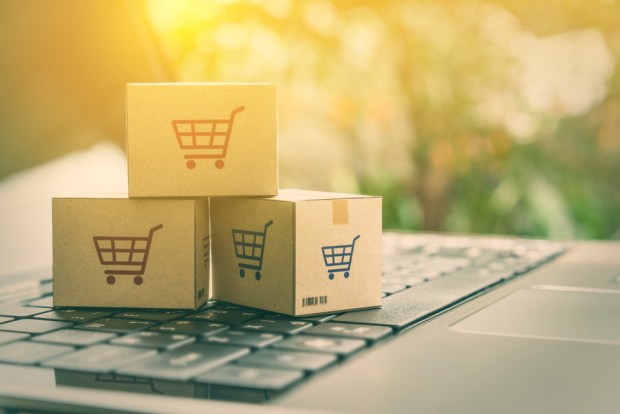Taking The Good Of B2C Payments — And Leaving The Bad — For B2B eCommerce

With the B2B eCommerce market towering over B2C’s in terms of transaction value — Forrester Research estimates the U.S. market will grow from $889 billion by the end of 2017 to $1.2 trillion by 2021 — the business-to-business payments market is primed for disruption.
Corporate buyers want to make purchases online and pay for goods in ways similar to those used in their personal lives. But the reconciliation, security, payment terms and buyer-supplier relationship do not mean one size fits all for B2B transactions initiated on an eCommerce platform. Add globalization and cross-border transactions into the mix, and the payments landscape quickly grows more complicated.
The payment rail and technology options for B2B eCommerce platforms are vast, and continue to grow. However, for B2B eCommerce platforms to support efficient payments that work for both ends of the transaction, they must balance buyer choice with suppliers’ need for easy reconciliation, says Christophe Bourbier, chairman and co-founder of France-based payments acceptance platform Limonetik.
The company recently announced that it is collaborating with B2B eCommerce platform OroCommerce to facilitate cross-border transactions, streamlining payment collection and reconciliation for online B2B sellers. According to Bourbier, B2B eCommerce platforms and their sellers want to be able to combine traditional and more nuanced payment technologies to meet a global buyer base.
“When you’re a B2B seller, you want to combine the traditional way of being paid — which is ACH for the U.S., SWIFT for international, BACS for Europe and so on,” he told PYMNTS in a recent interview. “But these are complex to reconcile. And you want to combine these traditional forms of payment with new payment technologies like bank cards, and PayPal, and other electronic payments.”
B2B eCommerce platforms, he continued, “don’t want to only do bank cards, and don’t only want to do bank transfers. They want to combine them.”
He noted that the ability to offer this kind of range in payment methods and rails is largely about choice for corporate buyers. However, sellers have to be able to offer flexibility without running afoul of geography-specific regulations, and must be able to easily reconcile the transactions coming in. This can be a particular challenge for companies selling to other businesses online, said Bourbier. Electronic payment technologies may be more expensive to suppliers, but for more streamlined reconciliation, that extra cost is often worth the value.
“Sellers want to push some new payment tools to their buyers because it’s going to be more efficient, quicker, more secure,” he said.
This is particularly true as payments accelerate. Faster payments mean suppliers have to increase their reconciliation processes from, for instance, once at the end of every day to processing in real-time, Bourbier said.
“The fact that a payment is done in 10 seconds is great — it’s more secure, because you’re sure you’re going to be paid,” he noted. “But you need to reconcile in real time.”
While the role of faster and real-time payments remains uncertain in the B2B landscape, most professionals surveyed by the Association for Financial Professionals (AFP) in its 2016 report agreed that faster payments will be a good thing for their firms. But bank transfers through rails like ACH can complicate reconciliation on the supplier-side, said Bourbier, particularly due to its requirement for manual data entry on the buyer-side.
“The buyer needs to go to their bank and type in their IBAN invoice number, and sellers are unsure if they are going to actually receive money,” he said. “There may be a mistake in the invoice number that was typed in. And that will be complex to reconcile.”
Mixing ACH rails with ePayments technologies can address these issues by adding automated data entry and improving the payer’s user experience, while moving money through faster payment rails and reducing the risk of non-payment and reconciliation issues for suppliers, he added.
The B2B eCommerce market is experiencing significant growth, as is the B2B payments industry. And though, according to Deloitte, the B2B eCommerce payments sector remains in its “infancy,” this particular area of corporate payments is growing at nearly twice the speed of the overall B2B payments market (10.4 percent CAGR, versus 5.8 percent CAGR, respectively). The B2B eCommerce payments industry is slated to see a $2.77 trillion valuation in the U.S. in 2020, Deloitte added.
With payments accelerating and globalizing, the B2B eCommerce industry is taking a page out of B2C’s book. Last year, OroCommerce announced it’s working with PayPal, which will provide an integrated payment solution for the Oro eMarketplace. While corporate buyers want similar user experiences to their personal online shopping lives, Bourbier emphasized the importance of designing eCommerce and payment solutions specific to the B2B market — instead of forcing the round peg of B2C payments into the square hole of B2B commerce.
“You need to be able to handle the complexity,” Bourbier said, adding that compliance differs across borders, reconciliation processes differ across payment rails, and the needs of buyers and suppliers are inevitably more intricate. “To come with a single solution that handles that complexity — good luck. To have one API to try to fit all payment solutions, it’s not going to happen. But you need one solution to integrate and localize payments.”
